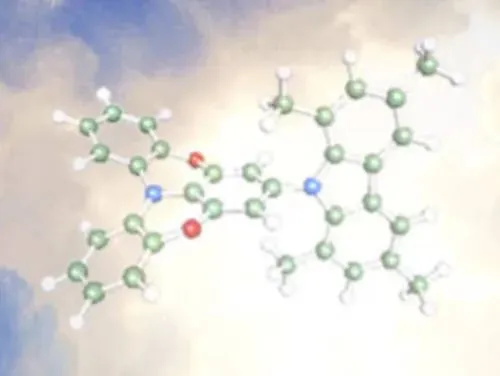 Researchers at Kyushu University have developed a more accurate model with which to design ‘thermally activated delayed fluorescence’ (TADF) OLED materials.
Researchers at Kyushu University have developed a more accurate model with which to design ‘thermally activated delayed fluorescence’ (TADF) OLED materials.
Emission from OLEDs occurs when excited electrons drop to their regular energy state and emit energy in the form of fluorescence.
Excitons to not have to go into the fluorescing singlet (S1) state, but can go into a triplet (T1) state which does not fluoresce (Note: T1 states can emit by a slower phosphorescent process under certain conditions).
“Thankfully, excitons can transfer between the triplet and singlet state,” said Kyushu’s research leader Professor Chihaya Adachi. “If we can convert triplet excitons into singlets, the efficiency of fluorescence drastically improves. One of the major breakthroughs of OLED research was the development of TADF materials [which] close the gap between S1 and T1, so that T1 excitons more easily transfer to S1.”
The gap, known as ‘ΔEst’, in a material is affected by too many factors to be modelled from first principles, said the university, and so assumptions are made to make the task manageable. However, theoretical results have been unreliably differing from measured results.
“To close the gap between theoretical and experimental methods our team worked to developed a model that can more accurately estimate ΔEst,” said fellow researcher Youichi Tsuchiya. “Our new analytical method employed several fundamental theories of physical chemistry and put into account the exciton transfer between the triplet energy states.”
The team was studying a material known as TMCz-BO. Part of its insight came from noticing that, when the energy gap between S1 and T1 approaches to zero, excitonic state alignment is affected by both temperature and the solvent in which the material is studied.
“This new analytical method will be utilised on other types of TADF materials, helping us to clarify exciton dynamics in future OLED research,” said Adachi. “We also want to explore the use of AI to accurately predict the properties of new materials.”
The Nature Communications paper ‘Temperature dependency of energy shift of excitonic states in a donor-acceptor type TADF molecule‘ explains the research, and can be read in full without payment.
